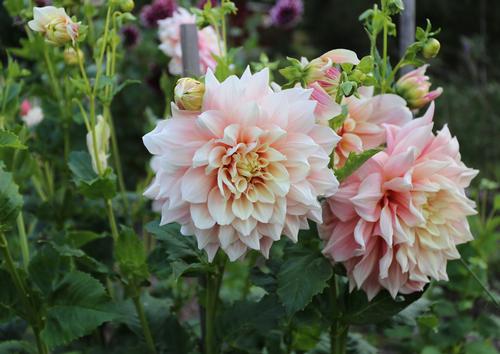Plan Ahead for a Bounty of Cut Flowers
If you love making fresh flower arrangements, planting a cutting garden is the best way to ensure you always have lots of beautiful, homegrown flowers, ready for picking.
When you’re designing a regular flower garden, you need to think about plants that look good together and will bloom in pleasing color combinations. But the purpose of a cutting garden is different. It’s all about production, and the measure of your success is abundance!
For a backyard cutting garden, there are three things you want to think about: maximizing production, minimizing maintenance, and growing flowers that will look great together in a vase.
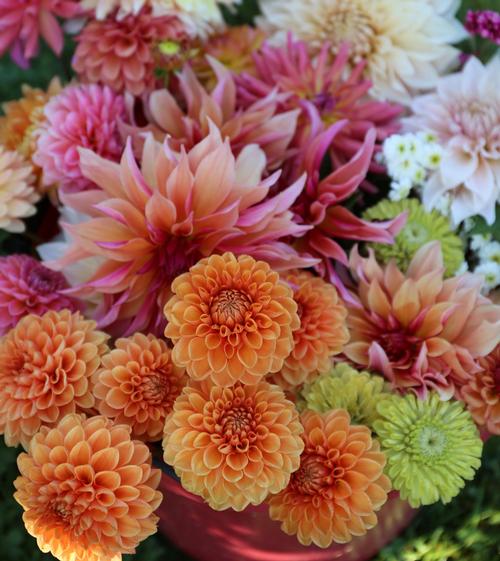
Choosing Plants for Your Cutting Garden
Long-stemmed annuals, perennials and bulbs make the best cut flowers, so that’s where to start. Keep in mind that most plants have a specific bloom time, meaning they will not flower continuously.
Spring bulbs, for example, bloom early and then fade away until next year. Early summer perennials such as peonies, iris, sweet William and lupines may bloom for up to a month, but then that’s it until the following year.
Some perennials, such as Shasta daisies, delphinium and coreopsis, will re-bloom if they are cut back after flowering. Annuals (and dahlias) have the longest flowering season. If you remove spent blossoms, they will usually give you a good 3 months of flowers.
A tool such as our Bloom Time Chart can help you choreograph a continuous supply of flowers.
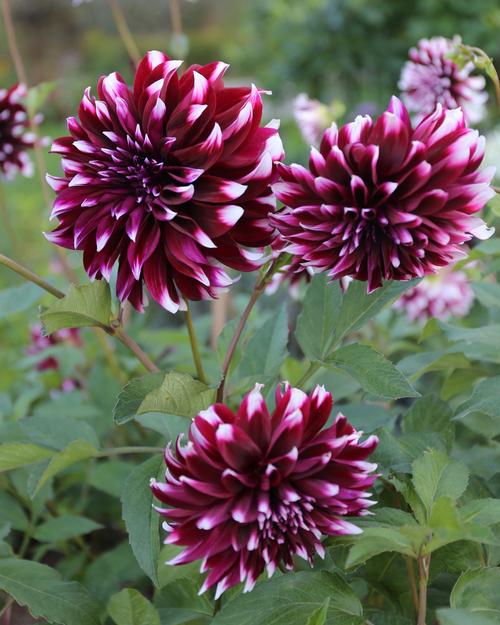
Plan Ahead for Good Combinations
If you have a relatively small space to work with, choose a color palette and then select flowers that will harmonize with those colors. Take a tip from floral designers and include a range of different flower sizes and shapes. Consider round flowers (ball dahlias), angular ones (foxgloves); soft ones (peonies) and stiffer forms (glads and salvia).
You’ll also want to include flowers that work as fillers (baby’s breath, ammi majus and asters). And don’t forget about foliage plants. They make the showy flowers go further and will give your arrangements a professional touch.
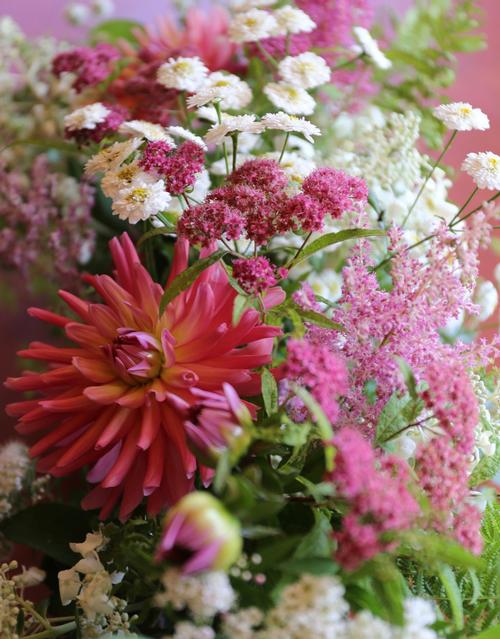
Cutting Garden Favorites
Here's a list of plants to get you started. It includes the most popular annuals, perennials, bulbs and foliage plants.
Annuals: ageratum, amaranth, ammi majus, Bells of Ireland, celosia, centaurea (bachelor’s button), cosmos, lisianthis, gladiolus, gypsophila (baby's breath), helichrysum (strawflower), larkspur, lisianthus, matricaria, nicotiana, orlaya, phlox, salvia, scabiosa, snapdragon, statice, sunflower, sweet pea, zinnia.
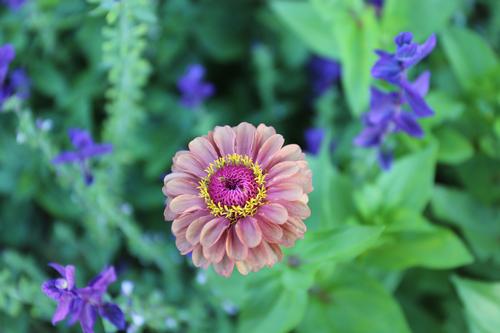
Perennials: achillea (yarrow), aster, campanula, coreopsis. delphinium, digitalis (foxglove), Echinacea, iris, lilies, lupine, phlox, Icelandic poppy, peony, rudbeckia (black-eyed susan), sage, scabiosa, shasta daisy, sweet William, veronica.
Bulbs: acidanthera, alliums, calla lilies, daffodils, dahlias, gladiolus, hyacinths, tulips
Foliage Plants: artemisia, bupleurum, coleus, dusty miller, euphorbia, heuchera, hosta, lady’s mantle, lamb's ears, lavender, sage.
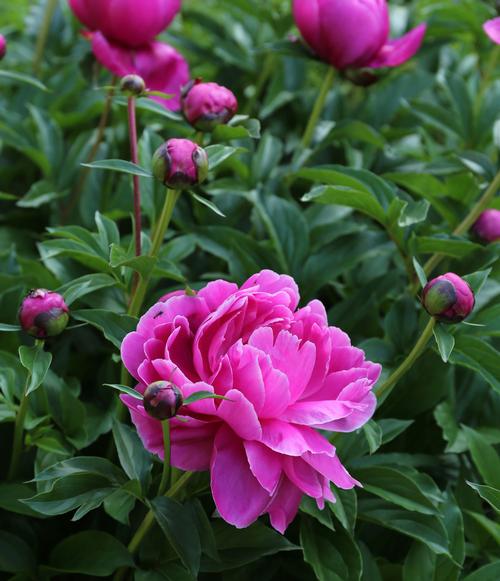
How to Maximize Production
Give your cutting garden a sunny spot with well-drained soil. Prepare the planting area, making sure it is loose and weed-less. If possible, take time to work in compost and all-purpose organic fertilizer.
The most efficient way to set up a cutting garden is to grow your flowers in rows, as you would vegetables. In fact, growing a row or two of flowers in your vegetable garden is an easy way to get started.
Creating a planting plan is the best way to maximize your growing space. Use a grid to make your plan. This makes it easy to determine out how many plants can be squeezed into each row. Your finished planting grid can then be transferred to the garden.
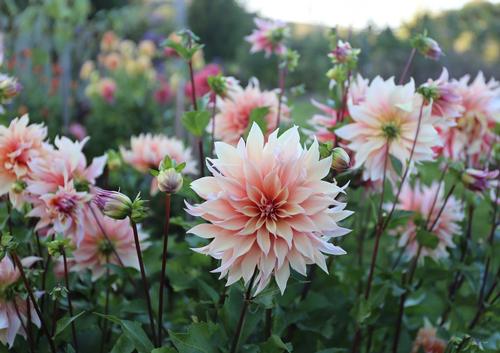
When working out your planting plan, you need to know each plant’s mature height and width. Use the recommendations on plant descriptions and seed packets as a guide but reduce the spacing by about 30%. With experience, you’ll get a sense of which plants need a little more or a little less than the recommended amount of space.
Standard planting grids for a cutting garden are 6”x6”, 9”x9”, 12”x12” and 18”x18” on center.
For example, zinnias and snapdragons can usually be planted on a 9”x9” grid; Queen Anne’s lace, cosmos and amaranth will need 12”x12” spacing; dahlias and sunflowers need 18”x18”.
To make plant care (and picking) as easy as possible, it's best to plant blocks of the same type of plant, keeping like with like. Plant perennials together, since they will stay in the same place from one year to the next. Plant annuals together so it's easy to remove them in the fall and replant in spring.
You can also separate plants that need staking (dahlias and delphiniums) from those that need a fence (sweet peas) or benefit from grow-through netting (snapdragons and bachelor’s buttons).
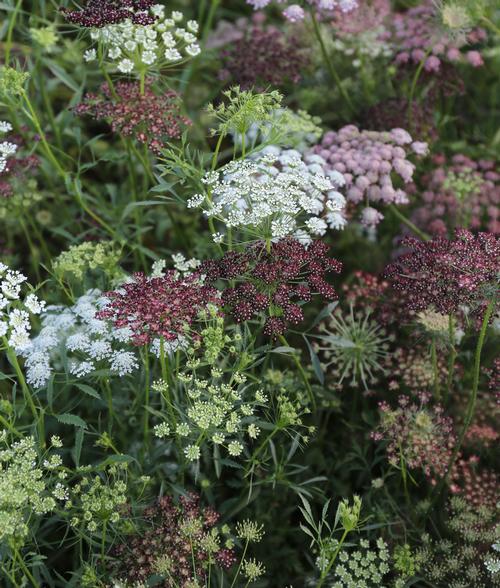
Minimizing Maintenance
Your cutting garden should be much easier to maintain than a regular flower garden. Ideally, you will be spending almost all of your time cutting flowers and very little time weeding.
Start with the paths. As soon you have planted the beds, cover up the paths with landscape fabric, black plastic, cardboard, straw or some other material that will stifle weed growth. Mulching the pathways also helps to reduce evaporation and retain soil moisture.
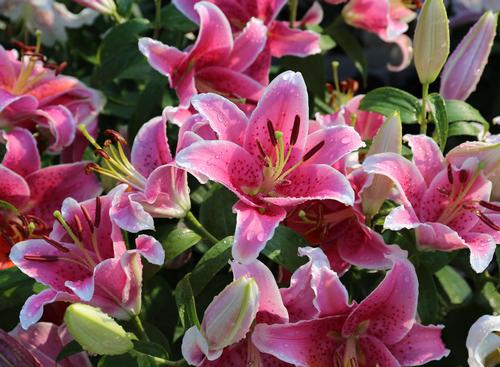
Local market gardeners who grow cut flowers, often cover their planting beds with black plastic. Then they burn or cut holes in the plastic to give each plant its own spot. This may not be a very practical approach for backyard gardeners. But if you plant densely, the plants will shade the soil and keep weed growth to a minimum.
In a cutting garden, deadheading will be your primary maintenance task. Removing spent flowers encourages annuals (and some perennials) to continue producing buds. If you don't remove the dead flowers, plants assume they have fulfilled their mission and can shut down for the season.
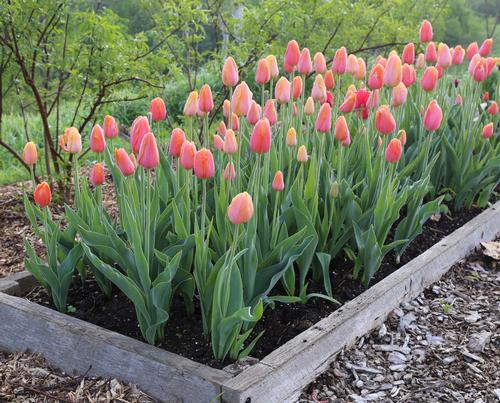
Another good reason to keep up with deadheading is plant health. As spent flowers begin to decay, they become a magnet for pests and diseases. A tidy cutting garden stays healthier, is easier to tend and looks better, too!
Learn more about cutting gardens here: Dahlia Flower Types and Sizes, Fragrant Flowers for Homegrown Bouquets, Top 10 Flower Bulbs for Cutting Gardens, and How to Make Cut Flowers Last Longer.
